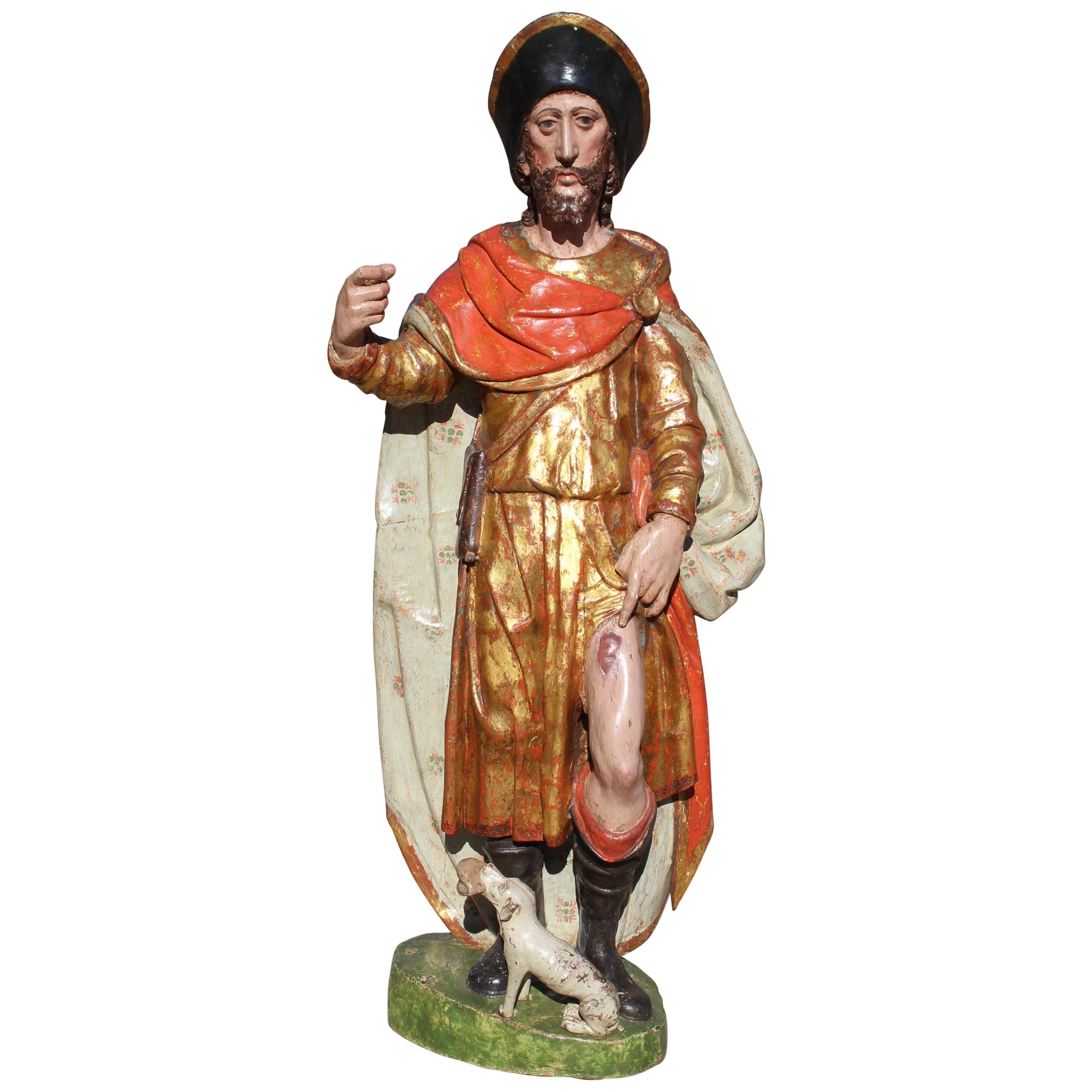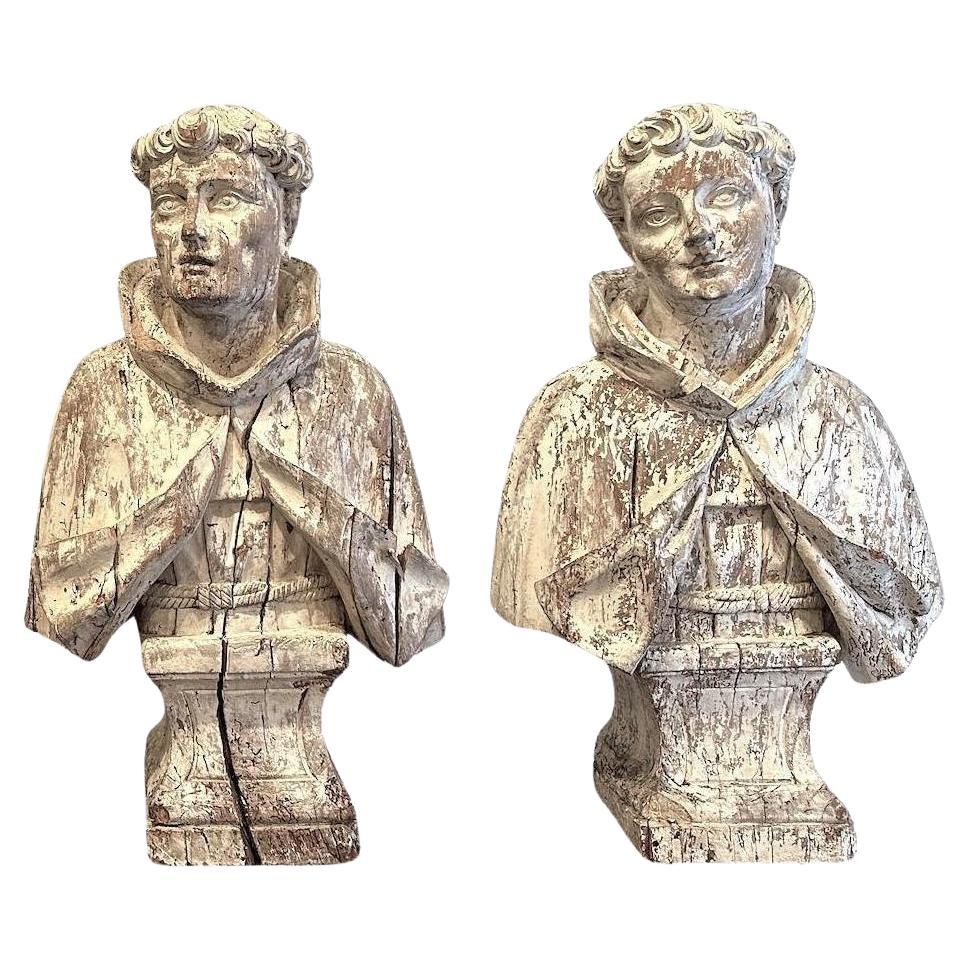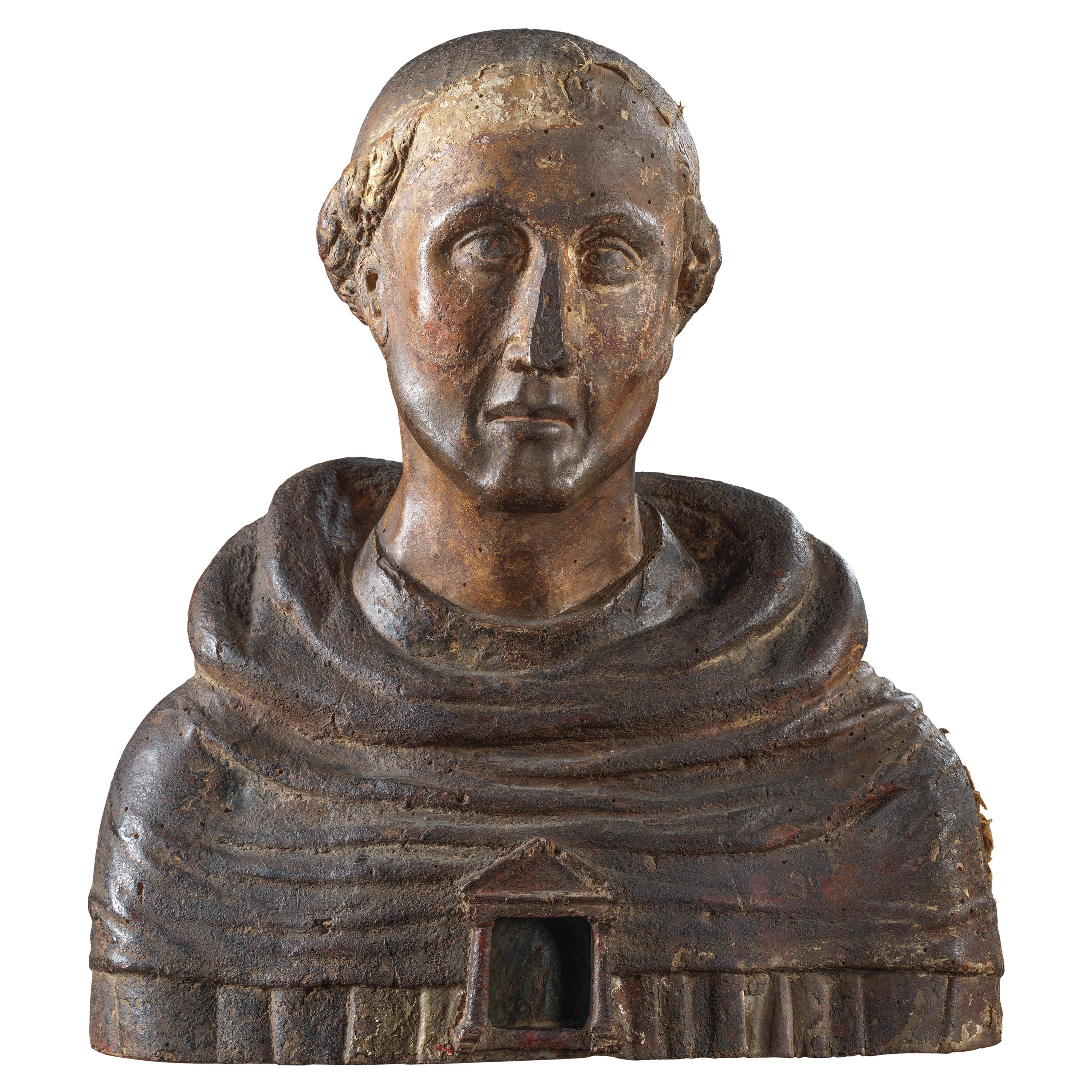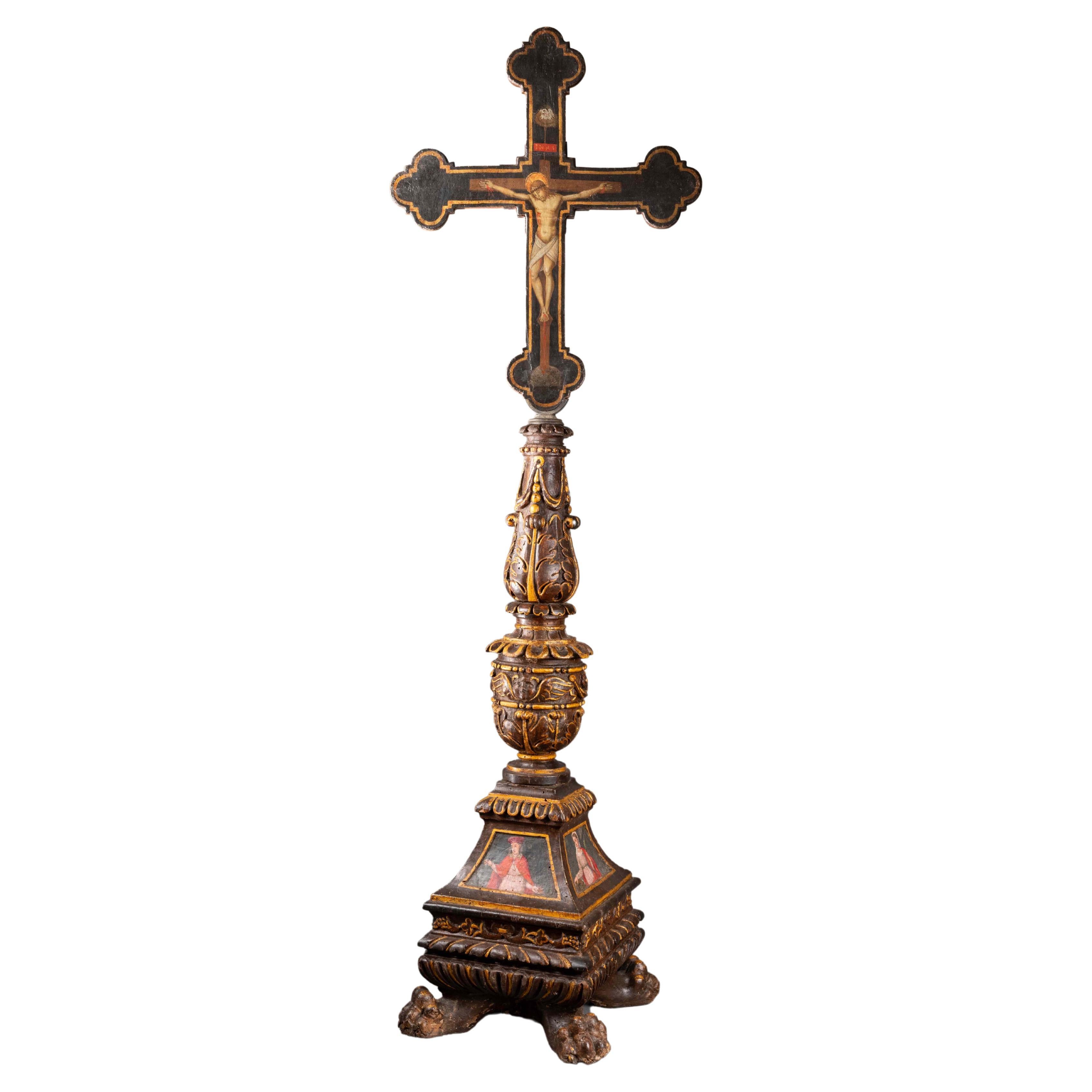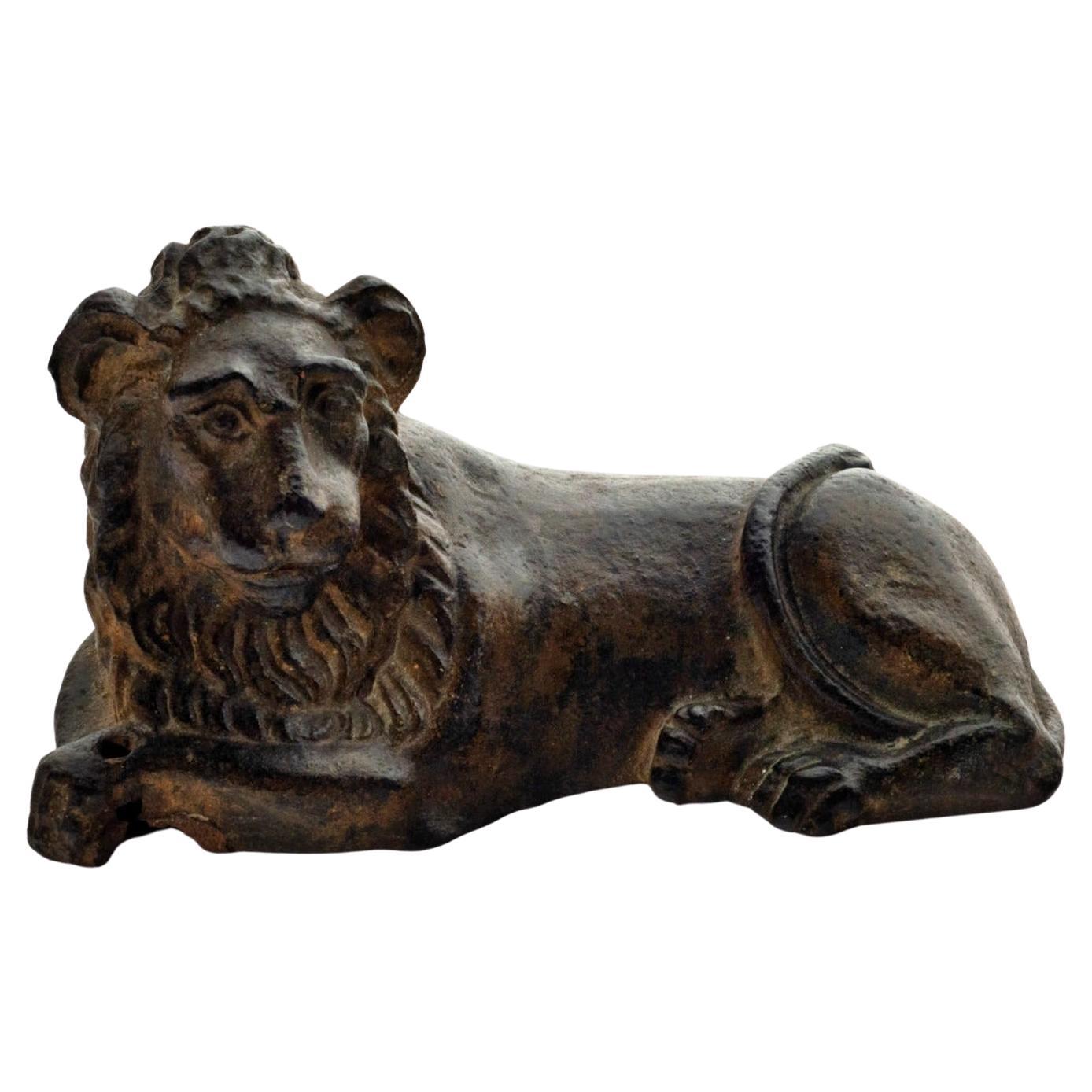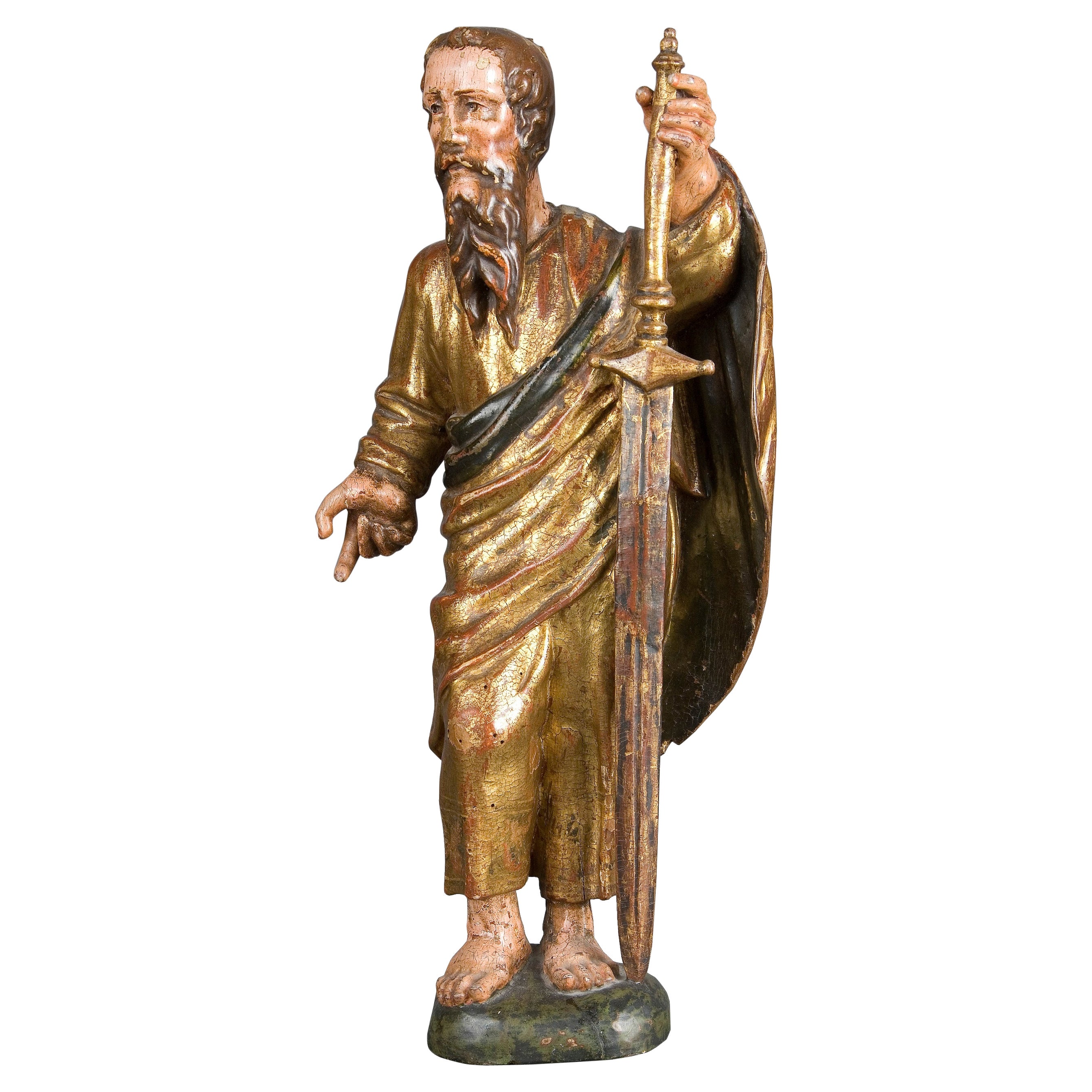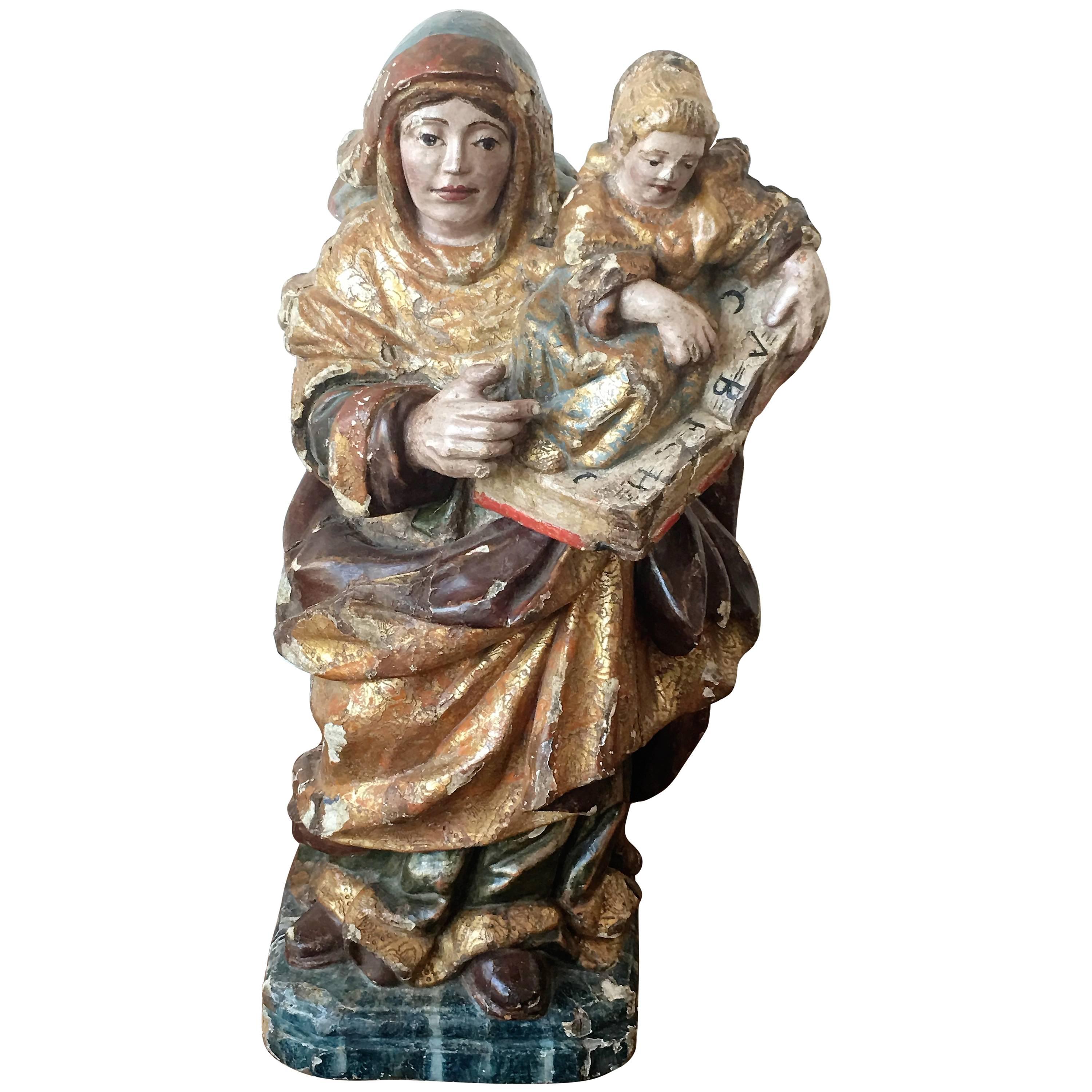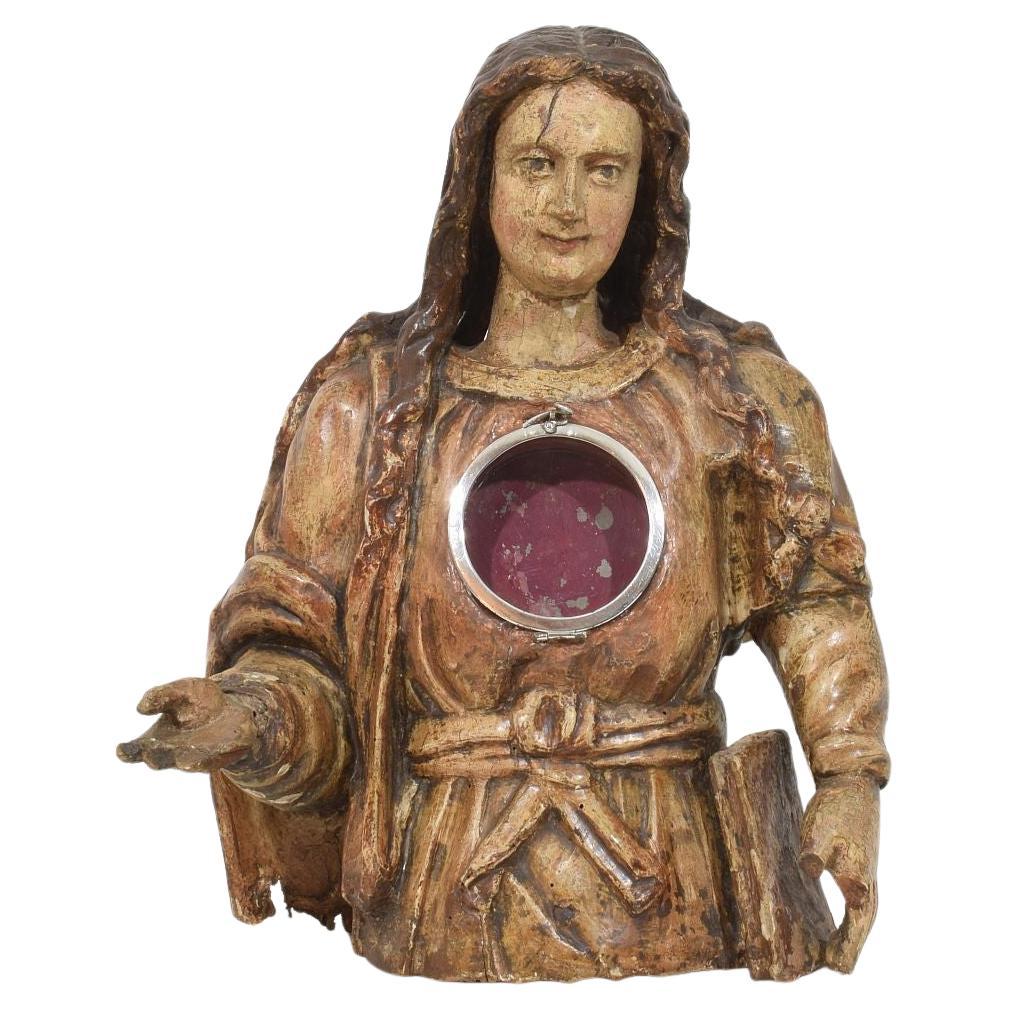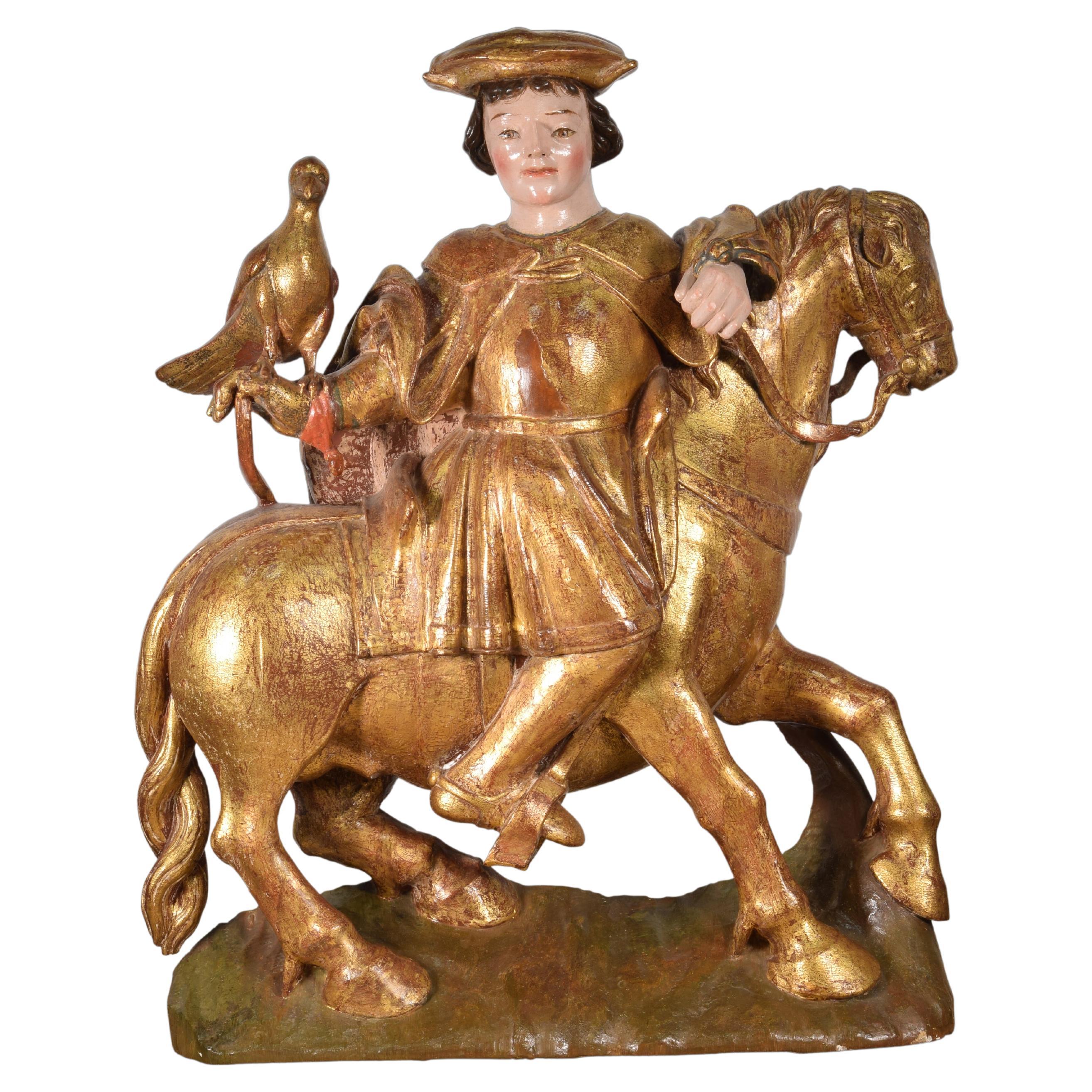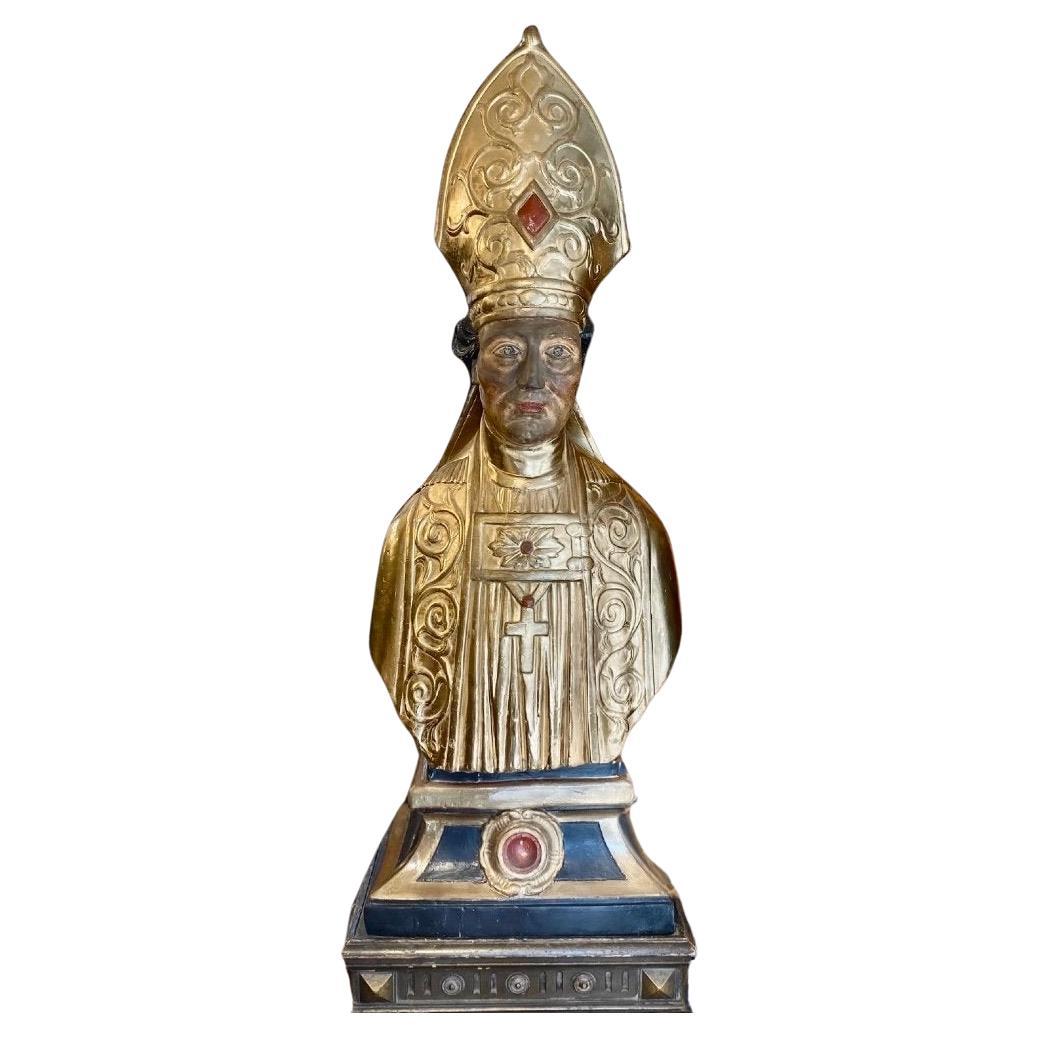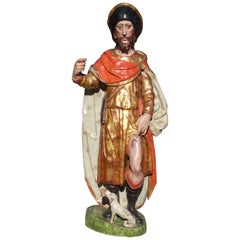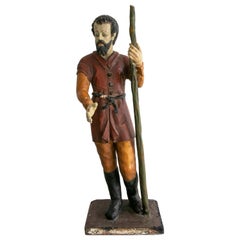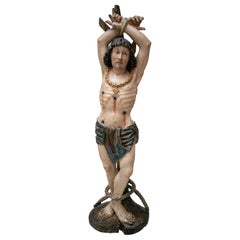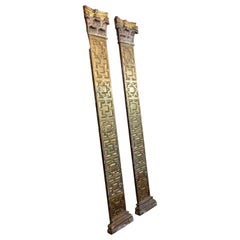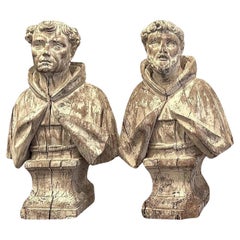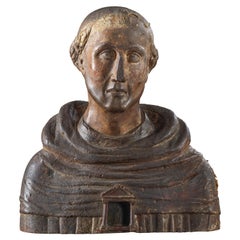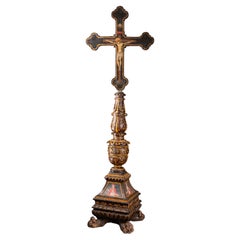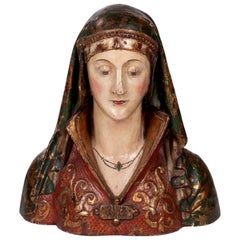
16th Century Spanish Wooden Painted and Gilded Reliquary Bust of a Saint
View Similar Items
Want more images or videos?
Request additional images or videos from the seller
1 of 15
16th Century Spanish Wooden Painted and Gilded Reliquary Bust of a Saint
$5,875.98List Price
About the Item
- Dimensions:Height: 17.72 in (45 cm)Width: 16.93 in (43 cm)Depth: 9.45 in (24 cm)
- Materials and Techniques:
- Place of Origin:
- Period:
- Date of Manufacture:1550
- Condition:Wear consistent with age and use.
- Seller Location:Marbella, ES
- Reference Number:1stDibs: LU3044315040792
About the Seller
5.0
Platinum Seller
Premium sellers with a 4.7+ rating and 24-hour response times
Established in 1996
1stDibs seller since 2017
702 sales on 1stDibs
Authenticity Guarantee
In the unlikely event there’s an issue with an item’s authenticity, contact us within 1 year for a full refund. DetailsMoney-Back Guarantee
If your item is not as described, is damaged in transit, or does not arrive, contact us within 7 days for a full refund. Details24-Hour Cancellation
You have a 24-hour grace period in which to reconsider your purchase, with no questions asked.Vetted Professional Sellers
Our world-class sellers must adhere to strict standards for service and quality, maintaining the integrity of our listings.Price-Match Guarantee
If you find that a seller listed the same item for a lower price elsewhere, we’ll match it.Trusted Global Delivery
Our best-in-class carrier network provides specialized shipping options worldwide, including custom delivery.More From This Seller
View All16th Century Spanish Gilded Painted Wood Sculpture of Saint Roch
Located in Marbella, ES
16th century Castilian gold-leaf gilded painted wood sculpture of Saint Roch, where the quality shows in the exceptional realistic skin tone. He is represen...
Category
Antique 16th Century Spanish Figurative Sculptures
Materials
Wood
19th Century Spanish Wooden Painted Figure Sculpture of a Saint Holding a Stick
Located in Marbella, ES
Mid 19th century Spanish wooden painted hand carved figure sculpture of a saint holding a long stick.
Category
Antique Mid-19th Century Spanish Figurative Sculptures
Materials
Wood
16th Century German Hand Carved Painted Wood St. Sebastian
Located in Marbella, ES
16th century German hand carved painted wood St. Sebastian.
Category
Antique 16th Century German Religious Items
Materials
Wood
16th Century Spanish Corinthian Pair of Pilasters Polychromed and Gilded w/ Gold
Located in Marbella, ES
16th Century Spanish Corinthian Pair of Pilasters Polychromed and Gilded w/ Gold
Category
Antique 17th Century Spanish Decorative Art
Materials
Wood
17th Century Spanish Pair of Painted Hand Carved Wooden Cherubs
Located in Marbella, ES
17th century Spanish pair of painted hand carved wooden cherubs.
Category
Antique Mid-17th Century European Figurative Sculptures
Materials
Wood
16th Century Spanish Iron Window with a Wooden Frame
Located in Marbella, ES
16th Century Spanish iron window with a wooden frame.
Category
Late 20th Century Spanish Architectural Elements
Materials
Iron
You May Also Like
Pair of 16th Century Italian Wooden Busts
Located in Los Angeles, CA
A pair of hand carved and parcel painted carved busts.
Category
Antique 16th Century Busts
Materials
Wood, Paint
$6,000 / set
Pair of 16th Century Italian Wooden Busts
Located in Los Angeles, CA
A pair of hand carved and parcel painted carved busts.
Category
Antique 16th Century Italian Busts
Materials
Wood, Paint
$6,000 / set
16th Century Polychrome Reliquary of a Monk
Located in Saint-Ouen, FR
The monk is depicted with an oval face, marked with high and strong cheekbones, sunken cheeks, strong jawbones and a cleft chin. His almond shaped eyes are opened under very strong a...
Category
Antique 16th Century Italian Renaissance Busts
Materials
Wood
renaissance wooden candelabrum and painted cross - Umbria, 16th century
Located in Bruxelles, BE
Base of a carved wooden candelabrum, polychrome and gilded; cross painted on both sides.
Umbria or Tuscany, 16th century
136 x 43,5 x 30 cm
(The cross and the base of the candelabrum were later assembled)
The base of the candelabrum is intricately carved and adorned with polychrome and gilded finishes. The shafts take on the shape of balusters reminiscent of ancient columns, feature ornate foliage decorations, garlands and winged cherub faces. The feet are crafted in the likeness of lion paws. The base is further embellished with depictions of four saint martyrs, among them Saint Barbara and Saint Catherine of Alexandria. The plasticity of the figures, outlined with strong contour lines, the clear and vibrant colors, are stylistic elements linked to the Umbrian tradition of the sixteenth century.The precisely defined and elegant drawing, along with the clear color palette applied with refined chiaroscuro modulations, became the signature of a style that would leave a lasting mark on the era to come. This is exemplified by a preference for vibrant, multicolored images, accentuated in this case by the use of red and pink in the saint's attire.
A notable addition, introduced later, is a polylobed cross painted on both sides. On one side, the Crucifixion is vividly portrayed:The treatment of the corpus itself is in line with High Medieval practice, emphasizing pathos by showing Jesus dead, his arms sagging from the weight of the body. The upper section displaying a pelican pecks at her breast to feed her young with her own blood; a symbol of the sacrifice of Christ on the cross whose body and blood similarly nourishes the celebrant during Mass.
The lower part depicts Golgotha. On the reverse side, the Resurrection is artistically presented in a Renaissance iconography, reminiscent of the renowned composition painted by Piero della Francesca, now housed in the Civic Museum of Sansepolcro. In terms of composition, with the frontal depiction of Christ holding the banner, this motif became particularly widespread in central Italy, spanning from Tuscany to Umbria throughout the 16th century..
The double-sided construction suggests that it may also have been carried in liturgical processions. In Umbria from the 14th century, the use of portable crosses painted on both sides had become a widespread practice, aimed at satisfying the monastic clientele that had significantly increased following the establishment of new religious communities.
The earliest surviving Tuscan painted crucifix represent Christ as Christus Triumphans, or the “Triumphant Christ” with his head up and eyes open. This form was supplanted in the 13th century with the Christus Patiens, or “Suffering Christ” type who is shown often with his head fallen on his shoulder and his eyes closed, as In our cross. The iconography of the suffering Christ appears to have developed out of a new interest in Christ’s human nature, the development of the feast of Corpus Christi and with increased importance given to the Eucharist. The process of humanizing the figure of Christ reaches its peak with the abandonment of all the previous expressive conventions in favor of more realistic details we can observe in this Crucifix, such as the swollen belly, the arms stretched to the limit of muscle tearing, the body falling heavily forward, the abundant blood on
the wounds, and the cross firmly embedded in the rock of Calvary.
It's worth noting that Renaissance candelabra...
Category
Antique 16th Century Italian Renaissance Figurative Sculptures
Materials
Wood, Giltwood
Lion of Forge, Spain, 16th Century
Located in Madrid, ES
Lion of Forge, Spain, 16th century
In forging, measurements: 10 x 17 x 5 cm
Good condition
Spanish private collection.
Category
Antique 16th Century Spanish Baroque Animal Sculptures
Materials
Iron
Saint Paul, Carved and Polychromed Wood. Spanish School, 16th Century
Located in Madrid, ES
Spanish school of the sixteenth century. "Saint Paul". Carved and polychrome wood.
Devotional image of a round piece carved in wood, polychrome and gilded, representing the Apostle ...
Category
Antique 16th Century Spanish Renaissance Religious Items
Materials
Other
Recently Viewed
View AllMore Ways To Browse
Reliquary Bust
Italian Marble Bust Sculpture
Ancient Bust
19th Century French Bronze Bust
19th Century Sculpture Bronze Bust
20th Century Marble Busts
Marie Antoinette
Cast Bronze Bust
Patinated Bronze Bust
19th Century Italian Bust
Carved Marble Bust
Man Bust Sculpture
Antique Gilt Bust
Face Bust
Small Bust Sculpture
Bronze Bust Patina
Classical Marble Bust
Small Bust
